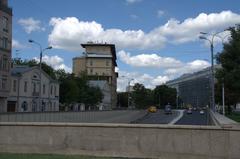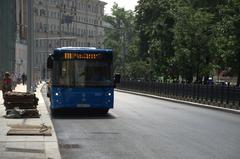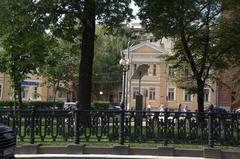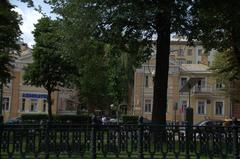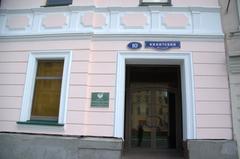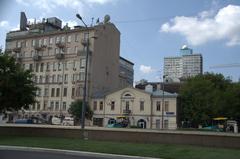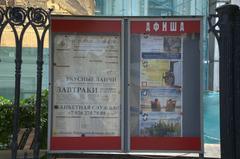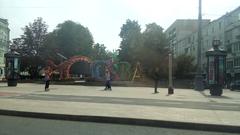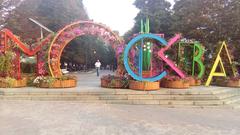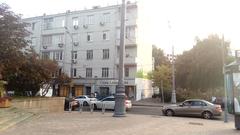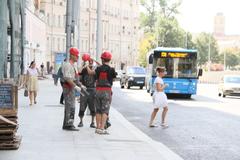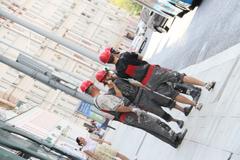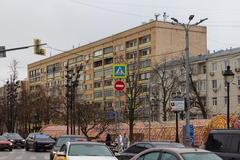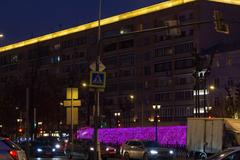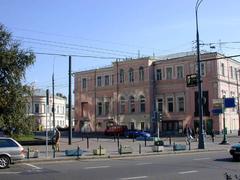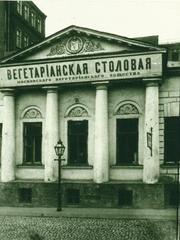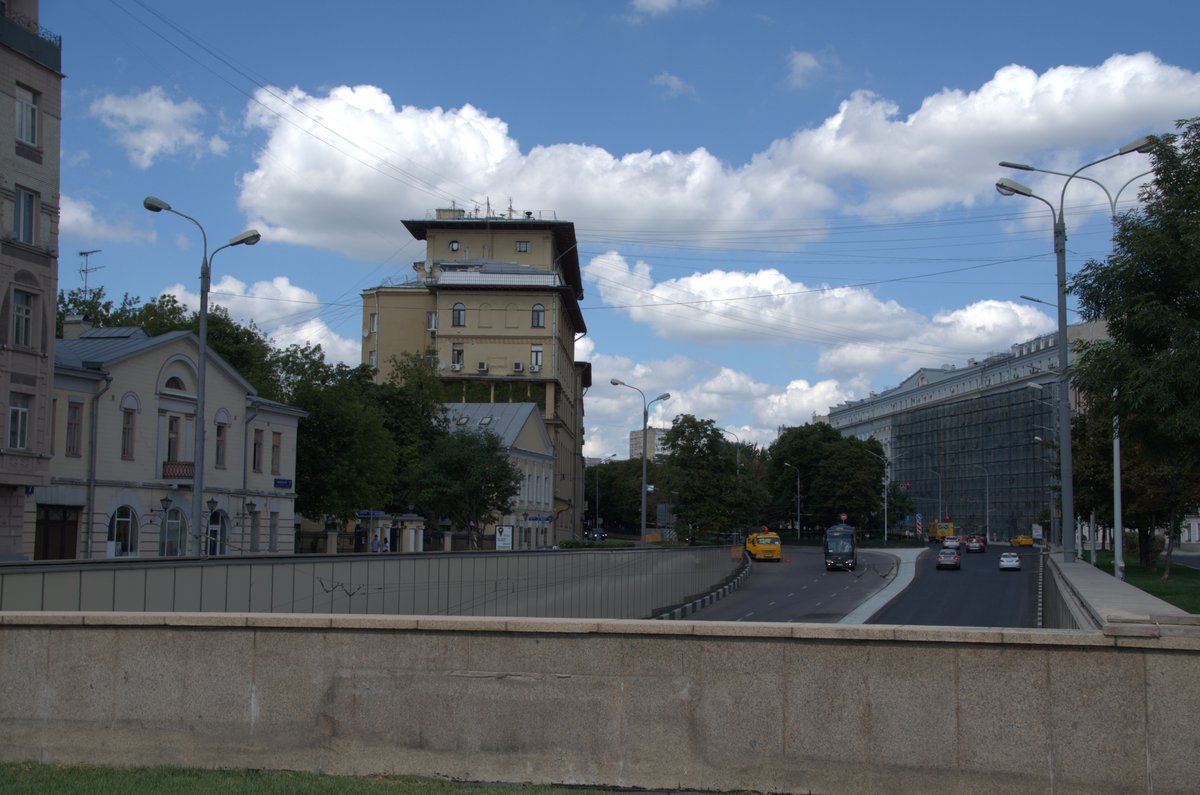
Nikitsky Boulevard Visiting Hours, Tickets, and Complete Guide to Moscow Historical Sites
Date: 14/06/2025
Introduction
Nikitsky Boulevard stands out as one of Moscow’s most distinguished and historic promenades, offering a harmonious blend of rich history, cultural depth, and tranquil urban greenery. As an integral segment of the Boulevard Ring—Moscow’s famed semi-circular chain of boulevards built upon the site of the old White City walls—Nikitsky Boulevard embodies the city’s architectural evolution and cultural vitality. This detailed guide provides a comprehensive overview of Nikitsky Boulevard, including its historical significance, top landmarks, practical visitor information (visiting hours, ticketing, accessibility), nearby attractions, and expert travel tips to make the most of your experience in the heart of Russia’s capital.
Contents
- Introduction
- History of Nikitsky Boulevard
- Notable Landmarks
- Nikitsky Boulevard’s Role in Moscow’s Urban Fabric
- Cultural Identity and Social Life
- Architectural Heritage
- Urban Renewal and Green Spaces
- Visitor Information
- Nearby Attractions
- Frequently Asked Questions (FAQ)
- Visuals and Interactive Map
- Conclusion
- Related Articles
- References
History of Nikitsky Boulevard
Origins and Early Development
Nikitsky Boulevard traces its origins to the early 19th century, following the dismantlement of Moscow’s White City (Bely Gorod) fortifications. Named after the Nikitsky Gate and the medieval Nikitsky Monastery, the boulevard was established during a transformative period after the Fire of 1812. The former ramparts were reimagined as green promenades in line with European urban trends, creating the iconic Boulevard Ring (Moscow City Guide).
Architectural Evolution
From its inception, Nikitsky Boulevard quickly became a prestigious address, lined with elegant mansions and public buildings reflecting styles from neoclassical and Empire to Art Nouveau. The Moscow Conservatory—a prominent landmark—exemplifies Russian neoclassicism and remains a center for musical excellence (Moscow Conservatory).
Cultural Significance
The boulevard has long attracted writers, poets, and musicians. Literary greats like Alexander Pushkin and musical legends such as Sergei Rachmaninoff and Pyotr Tchaikovsky are commemorated along its paths. Historic buildings are adorned with plaques, and statues celebrate the area’s cultural icons (Shooter Files: Moscow Street Guide).
Historical Events
Nikitsky Boulevard has witnessed significant historic events, from social gatherings and festive parades to political demonstrations. While architecture and monuments evolved during the Soviet era, the boulevard preserved its green, pedestrian-friendly character. Recent restorations have further enhanced its historic charm (Moscow City Guide).
Notable Landmarks on Nikitsky Boulevard
Moscow Conservatory
Founded in 1866 and named for Pyotr Tchaikovsky, the Moscow State Conservatory is a world-renowned institution for musical education and performance. Its Grand Hall is known for exceptional acoustics and hosts leading international performers (Moscow Conservatory).
Greater Church of the Ascension
This neoclassical church, originally designed by Matvey Kazakov and rebuilt after the 1812 Fire, is notable as the wedding venue of Alexander Pushkin. Its yellow-and-white façade and bell tower are architectural highlights.
Gogol’s Residence and Literary Museum
At house number 7, Nikolai Gogol lived his final years; the building now houses a library and museum dedicated to his legacy.
Memorials and Statues
Statues of prominent cultural figures, including Sergei Rachmaninoff, and blue plaques marking historic residences, enrich the boulevard’s cultural tapestry.
Nikitsky Boulevard’s Role in Moscow’s Urban Fabric
Nikitsky Boulevard is a vital artery within the Boulevard Ring, connecting Arbat Square with Nikitskie Vorota Square and linking key cultural and historic districts. Its tree-lined walkways, landscaped gardens, and historic façades embody Moscow’s integration of nature with urban life. Although portions were lost to infrastructure development in the 1960s, the remaining stretches remain a tranquil and picturesque escape in the city center (visitrussia.com; wikipedia.org).
Cultural Identity and Social Life
Nikitsky Boulevard has long been a hub for social interaction, intellectual exchange, and artistic inspiration. In the 19th century, it was a favored promenade for Moscow’s elite—Leo Tolstoy famously described its cosmopolitan atmosphere. Today, its proximity to Arbat Street—a historic avenue famed for its bohemian and artistic heritage—further enhances its cultural significance (friendlylocalguides.com; planetware.com; touropia.com).
Architectural Heritage
Nikitsky Boulevard features a striking array of architecture, from neoclassical mansions and embassies to Soviet-era buildings. Notable sites include:
- Gogol’s Residence: Literary landmark and museum.
- Great Ascension Church: Outstanding example of Russian ecclesiastical architecture.
- Lunin House: Now home to the State Museum of Oriental Art, showcasing Russian classicism (visitrussia.com; gpsmycity.com).
Urban Renewal and Green Spaces
Nikitsky Boulevard’s green spaces are the result of extensive landscaping, especially post-WWII when thousands of trees and shrubs were planted. The Boulevard Ring was designated a monument of landscape art in 1978, emphasizing Moscow’s commitment to preserving its green infrastructure (friendlylocalguides.com; visitrussia.com). Recent initiatives like the “My Street” program have further revitalized sidewalks, street facades, and pedestrian zones, fostering accessibility and modern urban amenities (archdaily.com).
Visitor Information
Visiting Hours and Tickets
- Nikitsky Boulevard: Open public space, accessible 24/7 year-round. No tickets required.
- Landmarks (e.g., museums, churches):
- Most museums (e.g., Gogol Museum, State Museum of Oriental Art) typically open 10:00–18:00, closed Mondays.
- Moscow Conservatory: Box office open 10:00–18:00; ticket prices vary by event (Moscow Conservatory).
- Churches: Usually 9:00–19:00; free entry (donations welcome).
- Check official websites for up-to-date details.
Accessibility
- Wide, paved walkways suitable for wheelchairs and strollers.
- Benches and ramps at key points.
- Arbatskaya and Kropotkinskaya metro stations nearby, both wheelchair accessible.
Guided Tours and Events
- Local operators offer guided walking tours of the Boulevard Ring and Nikitsky Boulevard.
- Seasonal festivals, art installations, and open-air concerts are common, especially in spring and summer.
- Check local event calendars for schedules.
Travel Tips
- Wear comfortable shoes for walking the length of the boulevard.
- Photography is encouraged; early morning and late afternoon offer the best light.
- Dining options range from elegant restaurants to cozy cafés on and near the boulevard.
Nearby Attractions
- Arbat Street: Iconic pedestrian avenue with artistic heritage, shops, and cafés.
- The Kremlin and Red Square: Moscow’s most famous landmarks, a short walk away.
- Tverskoy Boulevard: Another historic green promenade.
- Great Ascension Church: On Bolshaya Nikitskaya Street.
Frequently Asked Questions (FAQ)
Q: What are Nikitsky Boulevard visiting hours?
A: Open 24/7 as a public space. Museums and churches along the boulevard have individual opening hours.
Q: Are tickets required?
A: No tickets for the boulevard itself. Some museums, concerts, or special events may require tickets.
Q: Is Nikitsky Boulevard wheelchair accessible?
A: Yes, the main walkways are accessible.
Q: Are guided tours available?
A: Yes, bookable through multiple local operators.
Q: What’s the best time to visit?
A: Spring through early autumn for pleasant weather and cultural events.
Visuals and Interactive Map
(Include high-quality images with alt tags: “Nikitsky Boulevard visiting hours - tree-lined promenade in Moscow”, “Moscow Conservatory on Nikitsky Boulevard”, “Gogol Museum and historic mansions”. Embed an interactive map pinpointing Nikitsky Boulevard and nearby attractions.)
Conclusion
Nikitsky Boulevard is a microcosm of Moscow’s layered history, architectural beauty, and vibrant cultural life. Its accessible green spaces, rich heritage, and proximity to key attractions make it a must-visit for any traveler. To enhance your visit, download the Audiala app for guided tours, maps, and the latest event updates. Continue your journey through Moscow’s living history by exploring related articles and sharing your experiences with fellow explorers.
Related Articles
- Exploring Moscow’s Boulevard Ring: A Walk Through History
- Top Historical Sites Near Arbat Street
- Guide to Moscow’s Architectural Styles
References
- Moscow City Guide
- Shooter Files: Moscow Street Guide
- Moscow Conservatory
- visitrussia.com
- friendlylocalguides.com
- Planetware
- Touropia
- Archdaily
